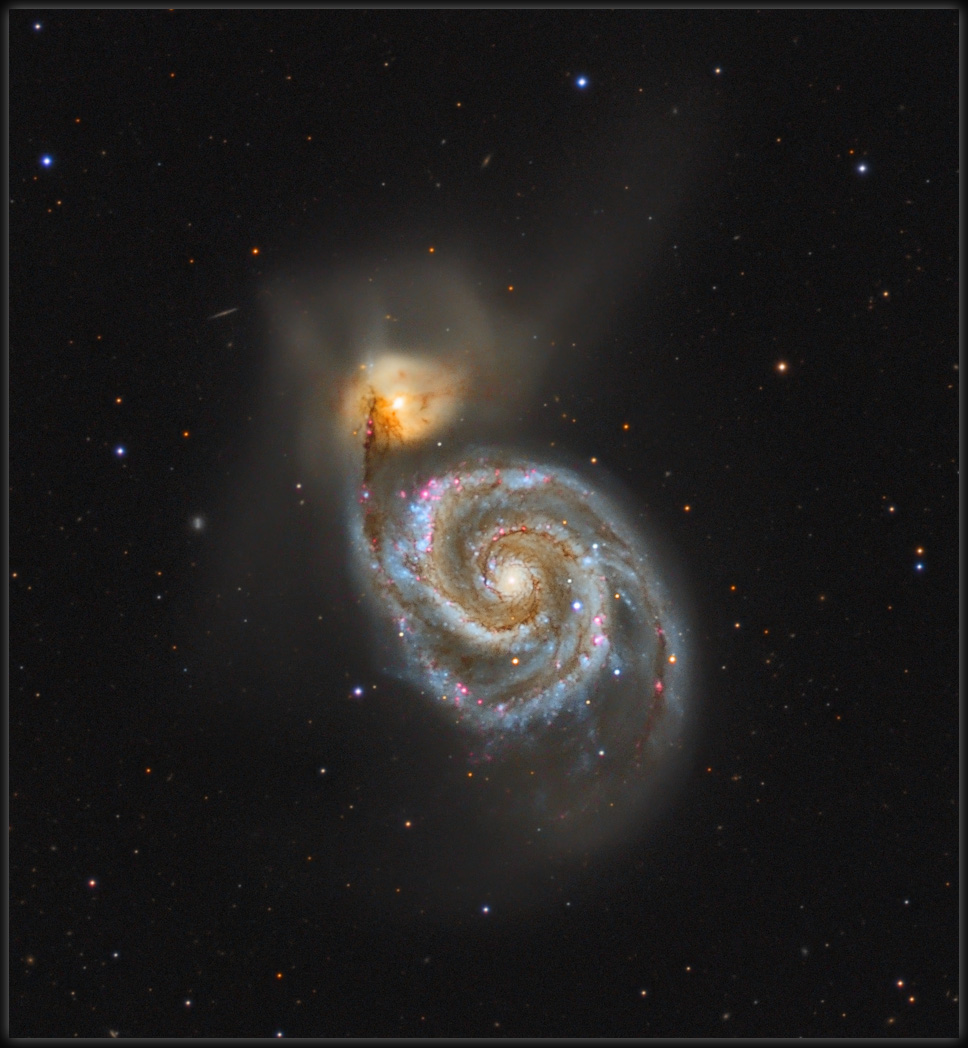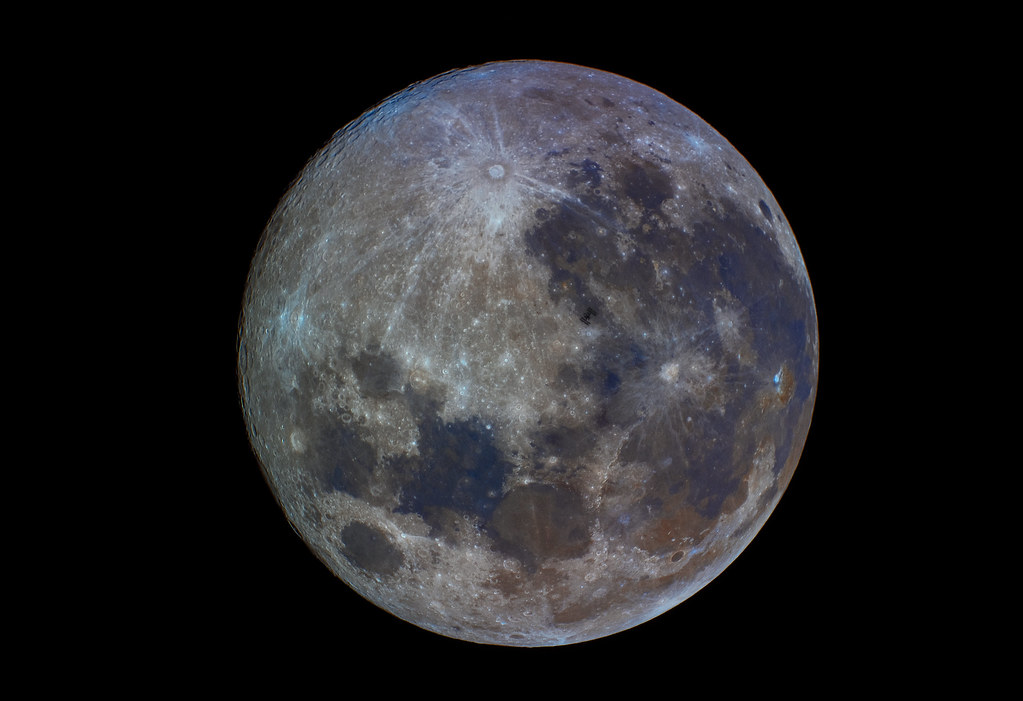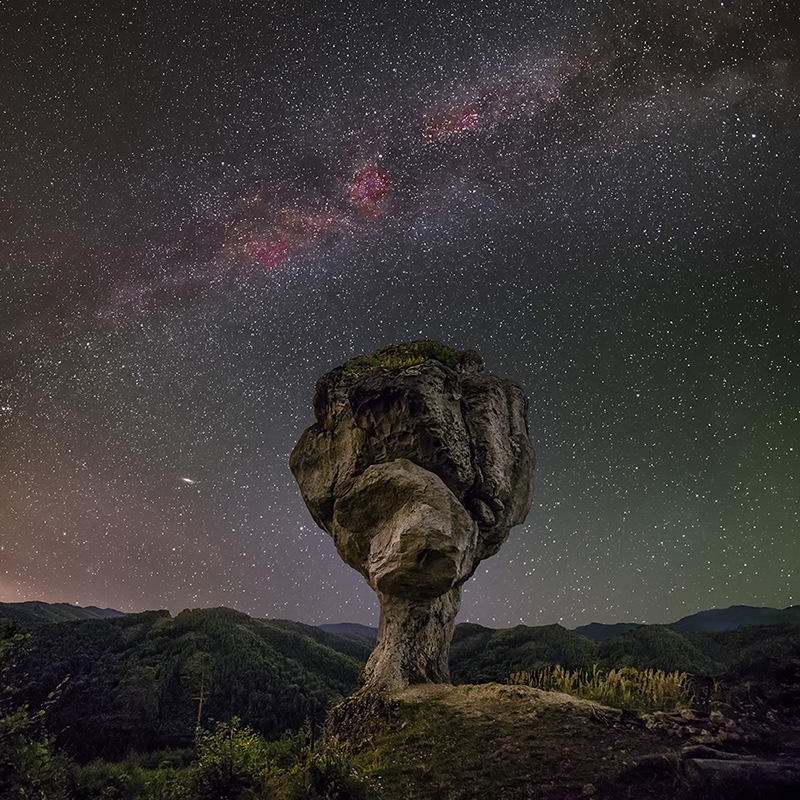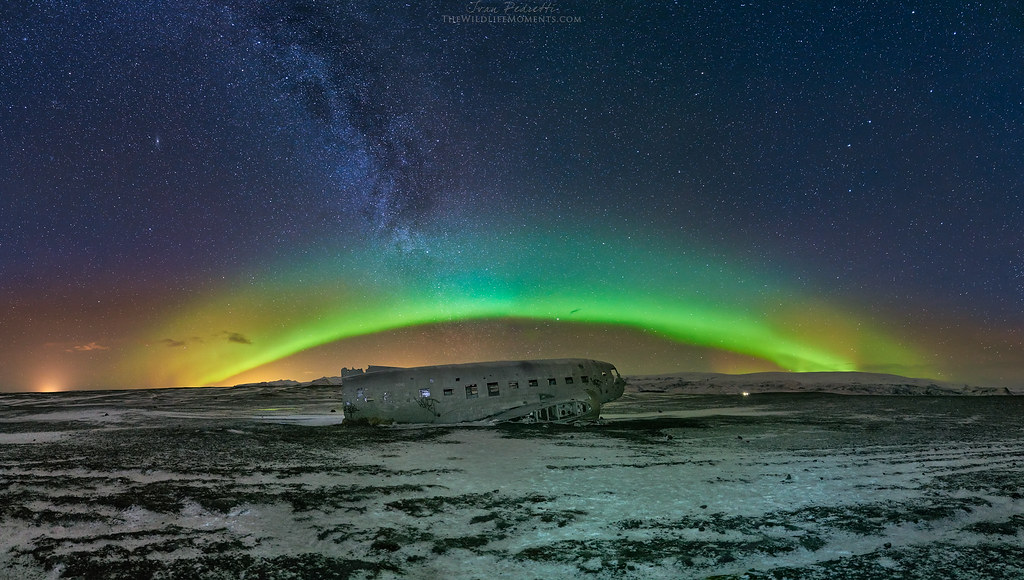Page 1 of 4
Submissions: 2018 May
Posted: Tue May 01, 2018 3:54 pm
by geckzilla
__________________________________________________________________________________________________
Please post your images here.
Please see
this thread before posting images; posting images demonstrates your agreement with
the possible uses for your image.
If hotlinking to an image, please ensure it is under 400K.
Hotlinks to images over 400K slow down the thread too much and will be disabled.
Thank you!
_________________________________________________________________________________________________
<- Previous submissions
Submissions: 2018 May
Posted: Wed May 02, 2018 12:37 am
by halh2
Thor's Helmet (NGC 2359) is a complex structure comprising a wind-blown bubble surrounding the Wolf-Rayet star WR7 (HD 56925) in Canis Major and wing-like appendages that emanate radially from it. Although its distance is uncertain, at the adopted distance of 11,960 lys (some estimates are twice this value), the bubble spans roughly 16 lys and the displayed field is 80.1 lys (W) x 78.7 lys (H) in extent.The central bubble comprises mostly interstellar material that has been swept up by the fast wind streaming from this 16 solar mass star. Interactions with a nearby molecular cloud mask the bubble’s outer regions to the southeast (north is up, east is to the left), and additional involvement with the interstellar medium are apparent in the reddish-colored ionization fronts on the edges of the radial features. Recent research based on the high 26Al/27Al and low 60Fe/56Fe ratios inferred for the early solar nebula suggests that triggered star formation in the swept-up shell of an ancient Wolf Rayet bubble may have been responsible for the Sun’s birth.
The data used to prepare this picture were collected as unguided 1-min sub-exposures on several nights between 7 December 2016 and 3 April 2018 at the Burke-Gaffney Observatory in Halifax, NS by a robotic 0.61-m Planewave CDK24 reflector operating at f/6.5. The telescope was equipped with an Apogee CG-16M CCD camera and Astrodon Gen II (E-series) broadband (RGB) and narrowband (H-alpha and OIII) filters. Its output was binned 2x2 to provide a resolution of 0.94-arcsecs/binned pixel. The sub-exposures were integrated using CCDStack (CCDWare) to produce mean background-flattened images of 1.60, 2.03, 1.87, 3.97 and 3.73-hrs duration in the R, G, B, H-alpha and OIII bands, respectively. A preliminary color image prepared from the mean broadband results was used to produce color-balanced channel images and a synthetic Luminance frame.
Subsequently, Photoshop (Adobe) was employed to: (1) blend the mean H-alpha and OIII images with the high-pass filtered synthetic Luminance; (2) blend the mean H-alpha image with Red, OIII with Green, and OIII with Blue, and high-pass filter the results; (3) produce a new color image from the blended R, G, B frames, which was used to color the blended synthetic Luminance; (4) slightly adjust the shape of the stellar profiles to reduce distortions introduced by the lack of guiding; (5) noise filter the corrected synL(Ha,OIII)R(Ha)G(OIII)B(OIII) image; (6) enhance image contrast by applying a mild unsharp mask at small scales to the entire image followed by a slightly more aggressive mask at moderate scales to the bubble; and (7) selectively enhance the contrast of bright interfaces using Soft Light blending of a spatially-masked copy of the image with its full version.
Re: Submissions: 2018 May
Posted: Wed May 02, 2018 2:30 am
by markh@tds.net
NGC 4236 or Caldwell 3
Copyright: Mark Hanson
NGC 4236 (also known as Caldwell 3) is a barred spiral galaxy located in the constellation Draco. The galaxy is a member of the M81 Group, a group of galaxies located at a distance of approximately 11.7 million light years from Earth. The group also contains the spiral galaxy Messier 81 and the starburst galaxy Messier 82
Full detail and high rez image can be seen here:
https://www.hansonastronomy.com/ngc
Thank you,
Mark Hanson
Re: Submissions: 2018 May
Posted: Wed May 02, 2018 2:34 am
by markh@tds.net
Messier 16, Eagle Nebula or "Pillars of Creation"
Copyright: Mark Hanson, S. Mazlin, R. Parker ,W. Keller, T. Tse, P. Proulx, R. Vanderbei, M. Elvov; SSRO/PROMPT/CTIO
Messier 16 (M16), the famous Eagle Nebula, is a star-forming nebula with a young open star cluster located in the constellation Serpens.
The nebula is best known for the Pillars of Creation region, three large pillars of gas famously photographed by Hubble in 1995.
Also known as the Star Queen Nebula, M16 lies at a distance of 7,000 light years from Earth and has an apparent magnitude of 6.0. The cluster’s designation in the New General Catalogue is NGC 6611, while the nebula is referred to as IC 4703.
The name Eagle comes from the nebula’s shape, which is said to resemble an eagle with outstretched wings. American astronomer Robert Burnham, Jr. introduced the name Star Queen Nebula because the nebula’s central pillar reminded him of a silhouette of the Star Queen.
Full version can be seen here, its quite incredible.
https://www.hansonastronomy.com/the-eagle-nebula-m16
Telescope: 16" RCOS, FLI 16803, Planewave 200HR
8 hours HA, 6hours O3 and 7 hours S2
"Processed from the 2016 archive at SSRO" CTIO, Chile
Thank you,
Mark Hanson
M51 two kilometers from Krakow
Posted: Wed May 02, 2018 7:31 am
by Bogdan J.
Photo details:
Ochojno, Poland observatory in the suburbs of Krakow, 04.2018
Paramount MyT, TEC140 f/5.2, ATIK One 6.0 - 18,5h (Ha 21x600s binx1, L 14x30s, 84x300s binx1, RGB 31,26,32 x300s binx2)
Full size:
http://www.astrobogdan.pl/wp/wp-content ... koniec.jpg
www.astrobogdan.pl
Re: Submissions: 2018 May
Posted: Wed May 02, 2018 6:49 pm
by SpookyAstro
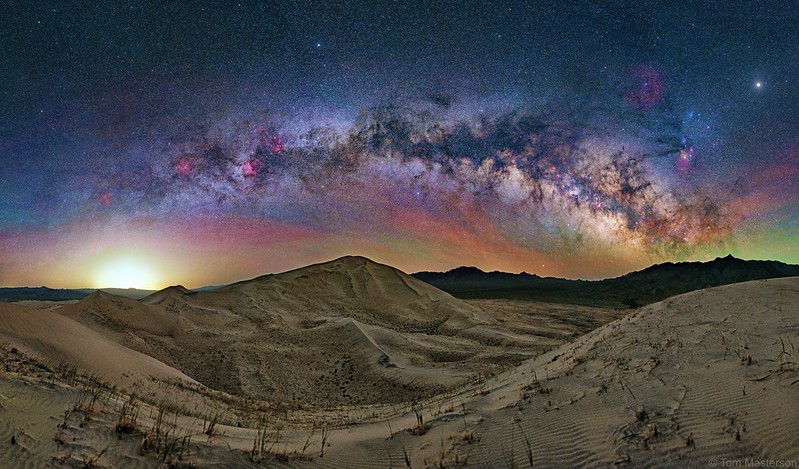 Milky Way Arch over Kelso Dunes
Milky Way Arch over Kelso Dunes by
Transient Astronomer, on Flickr
Image Credit and Copyright Tom Masterson
Re: Submissions: 2018 May
Posted: Thu May 03, 2018 8:13 am
by Brendan Keene
ISS Transit Of Full Moon
Copyright: Brendan Keene
Full Res and Info
https://www.flickr.com/photos/151036289 ... ateposted/
Re: Submissions: 2018 May
Posted: Thu May 03, 2018 10:18 am
by thewildlifemoments
M101 Wide field
Posted: Thu May 03, 2018 11:17 am
by litobrit
Hello,
A recently boosted with 6 hours of Ha
ASA10, AZeq6, Moravian 16200.
The full is here
https://www.astrobin.com/full/344950/0/?nc=litobrit
Re: Submissions: 2018 May
Posted: Thu May 03, 2018 4:04 pm
by RCompassi
Antares and Rho Ophiuchi region
The Rho Ophiuchi cloud complex is a dark nebula of gas and dust that is located 1° south of the star ρ Ophiuchi of the constellation Ophiuchus. At an estimated distance of 131 ± 3 parsecs, this cloud is one of the closest star-forming regions to the Solar System.
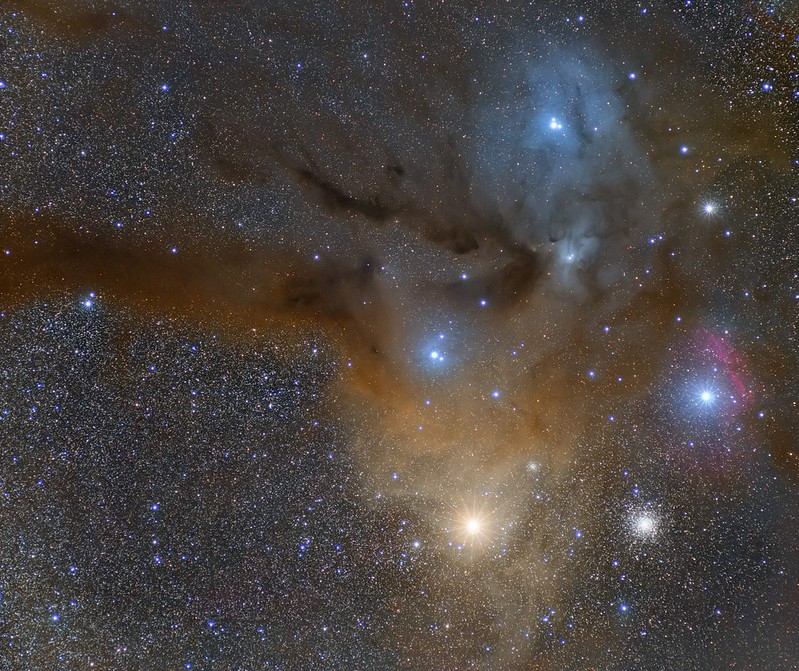 Antares and Rho Ophiucus
Antares and Rho Ophiucus by
Rafael Compassi, no Flickr
Nikkor 135mm F/2.8 em F/4
ASI1600MM
RGB =24x300s
Re: Submissions: 2018 May
Posted: Thu May 03, 2018 8:33 pm
by Ptitlepan
Hello,
My small contribution with a slim luck of being selected. The needle galaxy (NGC4565) with IC3546, NGC4555, NGC4562 take with my basic setup astropgraph

Newtonian telescope: Orion 203/1000
Camera: Canon EOS 1200Da
pictures: 87x240" @ 1600ISO
Copyright: Aurélien Lepanot

FULL:
http://image.noelshack.com/fichiers/201 ... p-full.jpg
or
https://www.astrobin.com/full/345034/0/?nc=user
Wide field:

FULL:
http://image.noelshack.com/fichiers/201 ... d-full.jpg
or
https://www.astrobin.com/full/345032/0/
Tanks!
Re: Submissions: 2018 May
Posted: Thu May 03, 2018 11:45 pm
by juanfilas
Lightning falling in the forest:
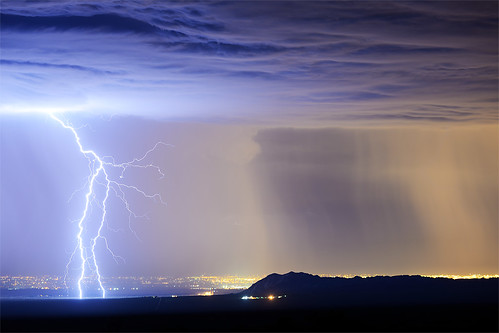 Impacto Cercano
Impacto Cercano by
Juan Filas, en Flickr
zoom (on the right a route):
 Impacto Cercano Zoom
Impacto Cercano Zoom by
Juan Filas, en Flickr
Site: Mendoza, Argentina
Copyright: Juan Filas
Jupiter - May 1st
Posted: Fri May 04, 2018 12:03 am
by Efrain Morales
Jupiter - GRS on May 1st, 05:08ut.Equipment: LX200ACF 12in OTA, CGE Mount, ASI290mm Cmos, PowerMate 2.5x Barlows, Custom Scientific RGB Filters.
Mars - May 2nd
Posted: Fri May 04, 2018 6:32 pm
by Efrain Morales
Mars on May 2nd, 09:20ut. Center Syrtis Major. Equipment: LX200ACF 12in. OTA, CGE Mount, ASI290mm Cmos, PowerMate 2.5x Barlows, Custon Scientific RGB filters.
Re: Submissions: 2018 May
Posted: Sat May 05, 2018 7:05 am
by jose
TOMAS:
R: 14 Light de 200 segundos, 14 Darks, 30 Flats y 40 Bias
G: 18 Light de 200 segundos, 18 Darks, 30 Flats y 40 Bias
B: 16 Light de 200 segundos, 16 Darks, 30 Flats y 40 Bias
L: 20 Light de 200 segundos, 20 Darks, 30 Flats y 40 Bias
TEMPERATURA: -10 GRADOS
TUBO: FSQ 106 ED
CCD: SBIG ST-8300M
MONTURA: CGEM
CCD guiar: QHY5 II
LUGAR: LAS INVIERNAS (GUADALAJARA)
saludos
jose
Re: Submissions: 2018 May
Posted: Sat May 05, 2018 11:47 am
by Richard Sweeney
 sh2 126
sh2 126 by
Richard Sweeney, on Flickr
The Image above is Sh2-126. It's a very feint emission nebula in Lacerta. If you locate Andromeda and trace a line towards Deneb, it’s about half way. This is a large star forming region approx. 1200 light years from Earth. The source of its ionisation is the intense ultraviolet radiation of the star 10 Lacertae, a blue main sequence star.
It was shot over 7 nights in September 2017. 12 hrs Ha in 150 second exposures, 7 hrs luminance 150 sec exposures, 11 hrs rgb again 150 second exposures.
I used a Samyang 135mm f/2 lens with a Zwo Asi 1600mm camera mounted on an AzEq6. Captured from my backyard in East Cork Ireland.
Re: Submissions: 2018 May
Posted: Sun May 06, 2018 8:24 am
by Václav Hýža
location: Strážovské vrchy in the Slovakia.
in the picture is: “Ztrateny Budzogan” is located on the slope of Mount Žibrid in the Strážovské vrchy. The height is 14 meters!
Processing Information: Panorama from 54 shots.
Landscape: 3 frames + 1 DF, ISO 3200, f / 2.8, 207s.
Stars: 42 frames + 8 DF, ISO 6400, f / 2.8, 18s.
Original dimensions: 6564 x 6564 pixels
Re: Submissions: 2018 May
Posted: Sun May 06, 2018 2:41 pm
by Marco Rank
HELIGOLAND NIGHT SKY
Rare view on the Galactic Center above the rock of Heligoland (North Sea, Germany on April 17th 2018)
While being close to Germany's brightest lighthouse one has only 2 seconds of exposure time between the rotary lights.
This panoramic image was made out of nine 35mm shots with f/1.4 and Iso 16.000.
On the right rock in the foreground you can see some northern gannets resting. The image was taken close to the "Lummenfelsen", which is famous for its population of common murres.
(c) Marco Rank
www.marcorank.com
www.facebook.com/weatherscapes
http://1drv.ms/u/s!AvxMFnF4Ygc4lrwNZ-g1D9MhkLqDLw
Re: Submissions: 2018 May
Posted: Mon May 07, 2018 8:49 pm
by Maicon Germiniani
Eta Carinae LRGB
TS 115/800
ZWO ASI 183 MM PRO
LRGB ASTRODON 1,25
120-60-60-60 (bin 1x1)
Subs 1 minute
DSS+PIXINSIGHT+PS6
[img3]
 Eta Carinae LRGB
Eta Carinae LRGB by
maicon germiniani, no Flickr[/img3]
Re: Submissions: 2018 May
Posted: Mon May 07, 2018 8:51 pm
by Maicon Germiniani
NGC6729
Corona Australis
TS 115/800
ZWO ASI 1600 MONO COOLED
LRGB
L: 51x300
RGB: ( 40 minutes each channel)
Total: 375 Minutes (6 hours and 15 minutes)
DSS + PIXINSIGHT + PS6
[img3]
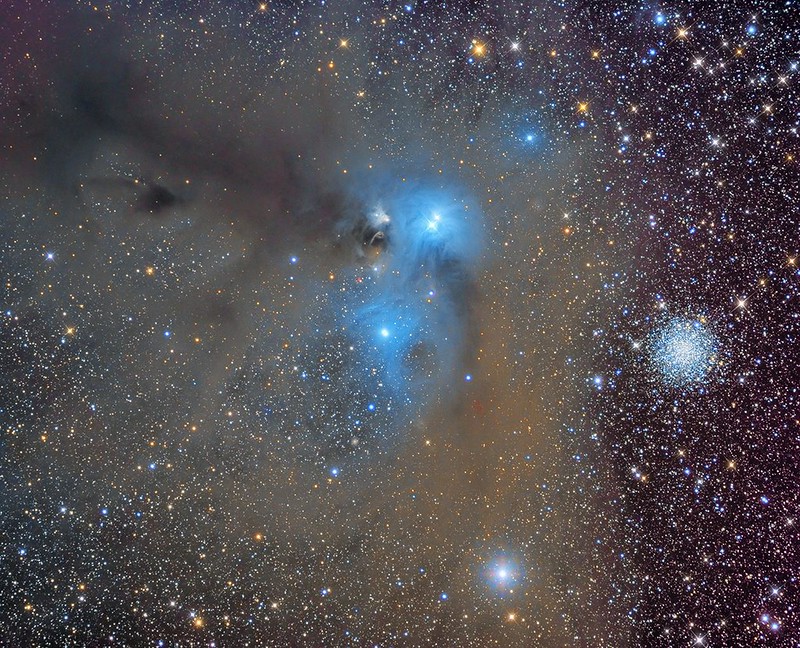 NGC6729
NGC6729 by
maicon germiniani, no Flickr[/img3]
Re: Submissions: 2018 May
Posted: Mon May 07, 2018 8:52 pm
by Maicon Germiniani
NGC 6334 Cats Paw Nebula
Nebulosa Pata do Gato - NGC 6334
TS 115/800
ZWO ASI 1600 MONO COOLED
HaLRGB
HA: 2 hours (subs 5 minutes)
L: 8 Hours (subs 5 Minutes)
RGB: 2 Hours (subs 3 Minutes)
Total: 12 Hours
PixInsight + PS6
[img3]
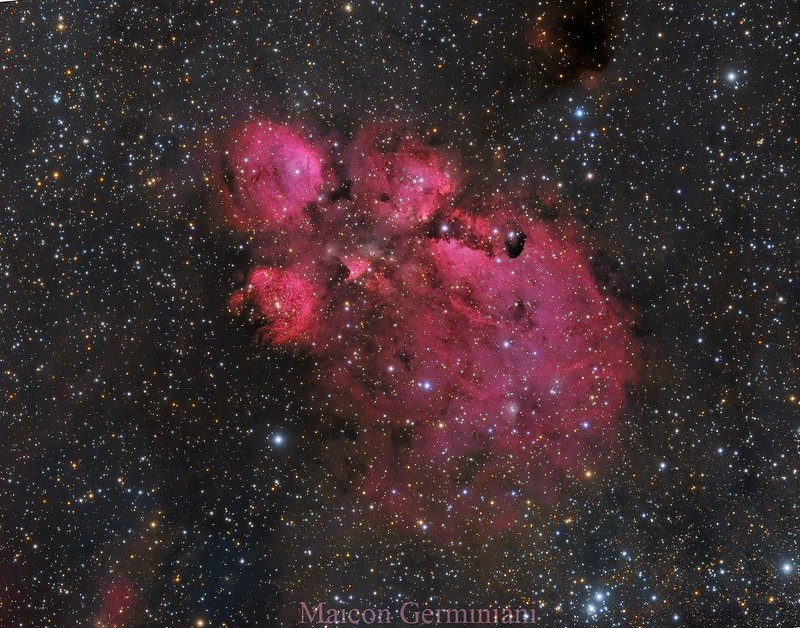 NGC 6334 Cats Paw Nebula
NGC 6334 Cats Paw Nebula by
maicon germiniani, no Flickr[/img3]
Re: Submissions: 2018 May
Posted: Mon May 07, 2018 8:53 pm
by Maicon Germiniani
Messier 8 - With H-ALPHA
Lagoon Nebula
HaLRGB
120 - 180 - 60 - 60 - 60
Subs: 3 Minutes
Total: 8 Hours
PixInsight + PS6
TS 115/800
ZWO ASI 1600 Mono Cooled
Optolong Filters
[img3]
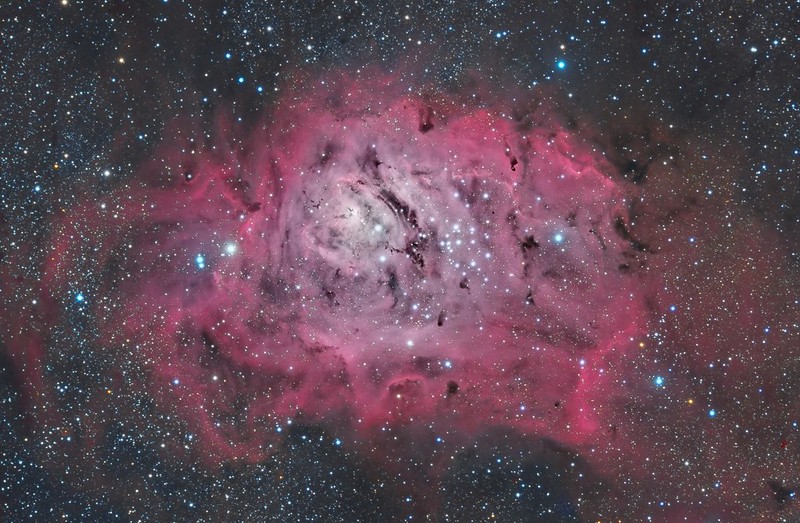 Messier 8 - With H-ALPHA
Messier 8 - With H-ALPHA by
maicon germiniani, no Flickr[/img3]
Re: Submissions: 2018 May
Posted: Mon May 07, 2018 8:54 pm
by Maicon Germiniani
Omega Centauri
TS 115/800
ZWO ASI 1600 Mono Cooled
LRGB (20 min + 4 min + 4 min + 4 min)
Total 32 minutos
Frames de 2 minutos
L Bin 1x1
RGB Bin 2x2
Processamento: PixInsight + PS6
[img3]
 Omega Centauri
Omega Centauri by
maicon germiniani, no Flickr[/img3]
Re: Submissions: 2018 May
Posted: Mon May 07, 2018 9:34 pm
by trobison
The Antennae Galaxies
The Antennae Galaxies are one of the youngest examples of colliding galaxies, as well as one of the nearest pairs of interacting galaxies to Earth. They are located in the constellation of Corus around 45 million light years away.
NGC 4038 and NGC 4039 were two separate galaxies some 1.2 billion years ago. The larger was a spiral galaxy, NGC 4039. The smaller galaxy was a barred spiral, NGC 4038.
About 600 million years ago, NGC 4038 and NGC 4039 passed through each other. At some point, they would have resembled the Mice Galaxies. Around 300 million years ago, the Antennae’s stars began to be released from both galaxies. These gravitational interactions have resulted in the long tails forming an antenna shape. Within the tails or streamers, areas of starburst activity exist.
Perhaps in the future, when our galaxy the Milky Way and the Andromeda galaxies come together, they may look similar to the Antennae during at least one point of their gravitational interaction.
Exposure Details:
- Lum 41X900
Red 24X450
Green 24X450
Blue 36X450
Ha 13X1800
Total time 26.75 hours
Instruments Used:
- 10 Inch RCOS fl 9.1
Astro Physics AP-900 Mount
SBIG STL 11000m
FLI Filter Wheel
Astrodon Lum, Red, Green, Blue Filters
Baader Planetarium H-alpha 7nm Narrowband-Filter
 The Antennae Galaxies
The Antennae Galaxies by
Terry Robison, on Flickr
Re: Submissions: 2018 May
Posted: Tue May 08, 2018 12:42 pm
by thewildlifemoments
